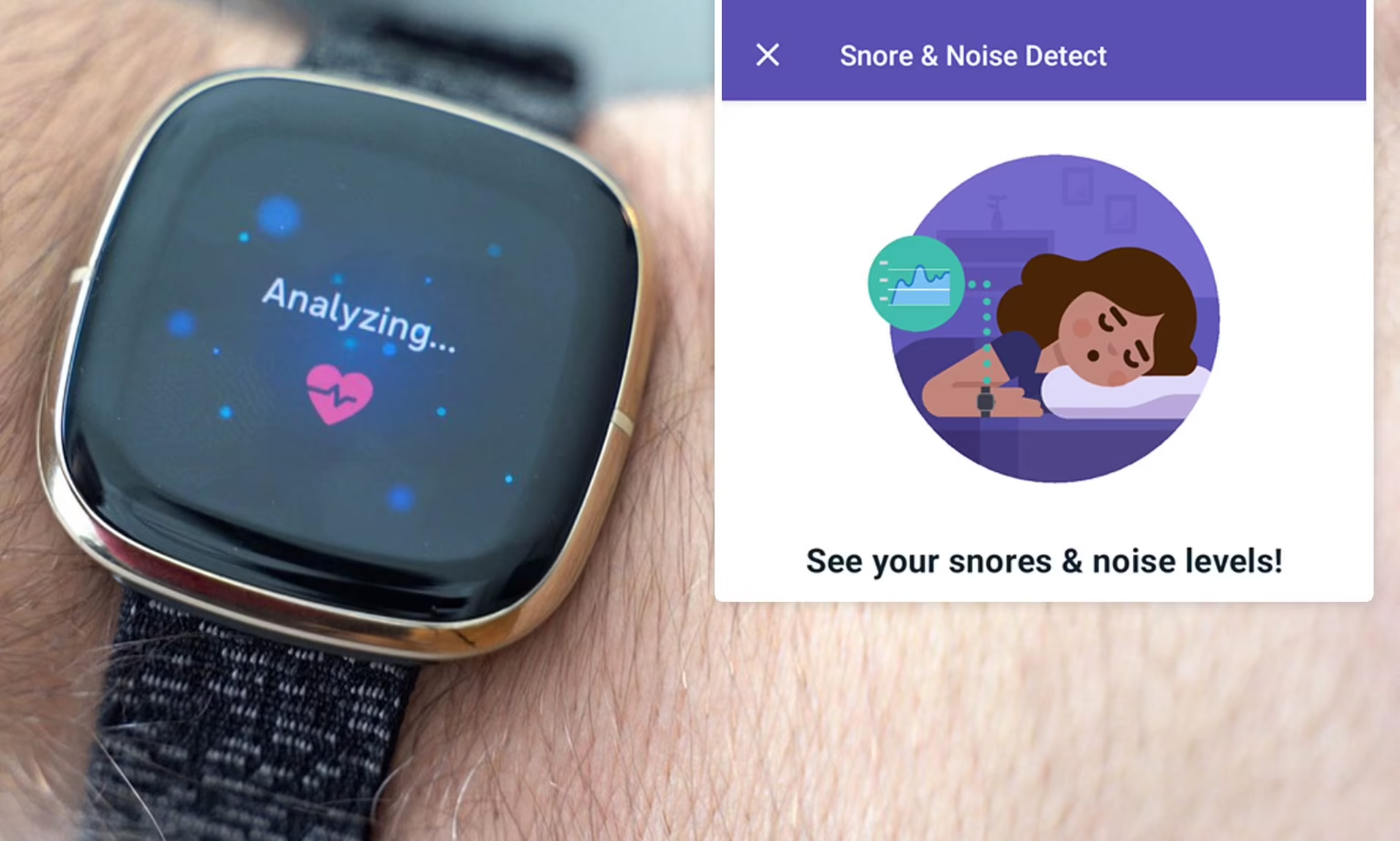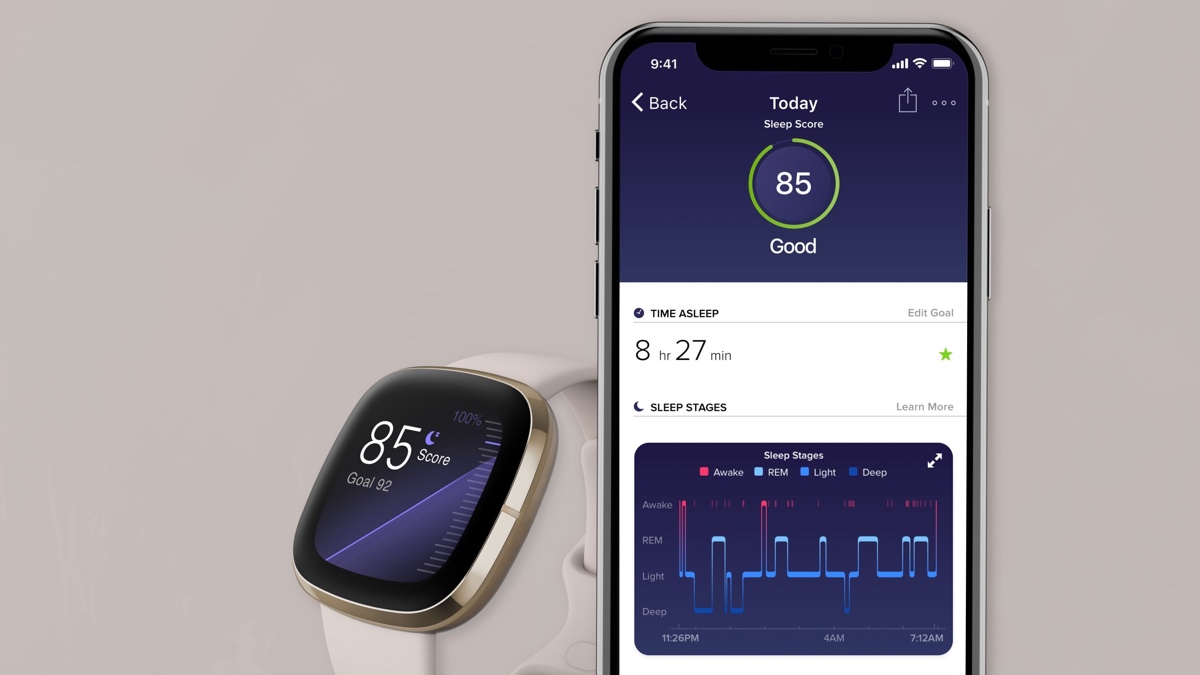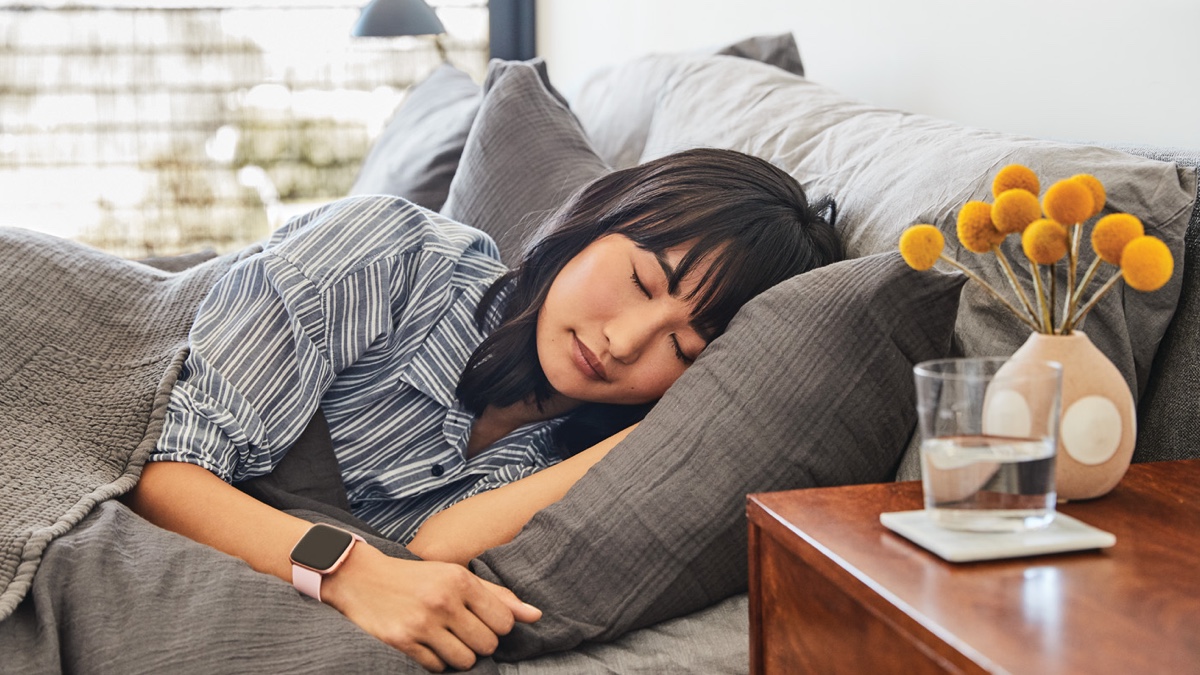Introduction
The quest for a good night's sleep has been an enduring pursuit for many, and with the advancements in wearable technology, such as Fitbit, the ability to gain insights into our sleep patterns has become increasingly accessible. Among the various sleep metrics that Fitbit provides, the recently introduced feature of snore detection has piqued the interest of users. Unmasking Zzz's: Viewing Snore Reports on Your Fitbit delves into the world of snore reports, shedding light on how this feature can offer valuable insights into our sleep quality.
In this article, we will explore the significance of understanding snoring and its impact on sleep quality. We will also delve into Fitbit's snore reports, uncovering the data they provide and how they can be utilized to gain a deeper understanding of our sleep patterns. Furthermore, we will discuss how to interpret snore data and provide practical tips for improving sleep quality based on the insights derived from this feature.
Join us on this journey as we unravel the mysteries of snore reports on Fitbit and discover the potential they hold for enhancing our overall well-being.
Understanding Snoring
Snoring, often dismissed as a mere nuisance, can offer valuable insights into our sleep quality. It is a common occurrence during sleep, caused by the vibration of respiratory structures due to obstructed air movement. While occasional snoring may be benign, persistent and loud snoring can indicate underlying health issues, impacting the overall quality of sleep.
Understanding the mechanics of snoring is crucial in recognizing its significance. The soft palate, uvula, and relaxed throat muscles can contribute to airway obstruction, leading to the characteristic sound of snoring. Factors such as obesity, nasal congestion, alcohol consumption, and sleep position can exacerbate snoring, underscoring the multifaceted nature of this phenomenon.
Moreover, snoring can be indicative of obstructive sleep apnea (OSA), a potentially serious sleep disorder characterized by repetitive pauses in breathing during sleep. OSA can lead to fragmented sleep, daytime drowsiness, and an increased risk of cardiovascular issues, emphasizing the importance of addressing snoring beyond its audible inconvenience.
By comprehending the implications of snoring, individuals can gain a deeper understanding of their sleep patterns and overall health. Fitbit's integration of snore detection into its sleep tracking capabilities empowers users to monitor and evaluate this aspect of their sleep, fostering a holistic approach to well-being.
In essence, snoring serves as a window into our sleep quality, offering valuable cues that can inform our efforts to achieve restorative and rejuvenating sleep. Through the lens of snore detection, individuals can embark on a journey towards better sleep hygiene and improved overall wellness.
Fitbit's Snore Reports
Fitbit's foray into snore detection represents a significant stride in the realm of sleep tracking, providing users with a comprehensive overview of their sleep patterns. The incorporation of snore reports within Fitbit's sleep tracking feature enables users to gain valuable insights into their nocturnal behaviors, thereby fostering a deeper understanding of their sleep quality.
Snore reports on Fitbit offer a detailed analysis of snoring episodes throughout the night, presenting users with a visual representation of their snoring patterns. This feature leverages the device's microphone to detect and record instances of snoring, subsequently generating a report that outlines the duration and intensity of snoring episodes. By presenting this data in a user-friendly format, Fitbit empowers individuals to discern trends in their snoring behavior, facilitating informed decision-making regarding their sleep habits.
The integration of snore reports into Fitbit's sleep tracking ecosystem enhances the comprehensiveness of the sleep data available to users. This augmentation enables individuals to correlate snoring patterns with other sleep metrics, such as sleep stages and duration, thereby painting a holistic picture of their sleep quality. By juxtaposing snore reports with other sleep data, users can identify potential associations between snoring and factors such as sleep disturbances, duration of deep sleep, and overall sleep efficiency.
Furthermore, Fitbit's snore reports contribute to the democratization of sleep insights, allowing individuals to proactively engage with their sleep health. By offering a nuanced understanding of snoring behavior, this feature empowers users to take proactive measures to address potential sleep disturbances, thereby fostering a proactive approach to sleep management.
In essence, Fitbit's snore reports serve as a valuable tool for individuals seeking to gain a deeper understanding of their sleep quality. By illuminating the nuances of snoring behavior and its potential impact on overall sleep patterns, this feature equips users with actionable insights, paving the way for informed decisions aimed at enhancing sleep quality and overall well-being.
Interpreting Snore Data
Upon accessing the snore reports provided by Fitbit, users are presented with a wealth of data encapsulating their snoring behavior throughout the night. This data, when deciphered effectively, can offer profound insights into one's sleep quality and potential areas for improvement.
The duration and intensity of snoring episodes serve as pivotal indicators within the snore reports. By scrutinizing the duration of snoring instances, users can discern patterns regarding the frequency and consistency of snoring throughout the night. This insight can unveil potential correlations between snoring and sleep disturbances, shedding light on the impact of snoring on the overall continuity of sleep.
Furthermore, the intensity of snoring, often quantified in decibels, provides users with a nuanced understanding of the magnitude of their snoring episodes. This metric can offer valuable cues regarding the severity of snoring, potentially signaling underlying sleep-related issues that warrant attention. By gauging the intensity of snoring, users can gauge the disruptive nature of their snoring episodes, enabling them to evaluate the potential impact on their sleep quality.
Additionally, the temporal distribution of snoring episodes within the sleep cycle can yield insightful revelations. By discerning the timing of snoring instances in relation to sleep stages, users can uncover potential associations between snoring and sleep disturbances. This analysis can unveil whether snoring predominantly occurs during specific sleep stages, providing valuable contextual information for understanding the interplay between snoring and sleep quality.
Moreover, juxtaposing snore data with other sleep metrics, such as sleep stages and overall sleep duration, can unravel comprehensive insights into the multifaceted nature of sleep quality. By correlating snoring patterns with sleep stages, users can discern potential disruptions in the progression of the sleep cycle, thereby identifying areas for targeted intervention to enhance sleep continuity.
In essence, interpreting snore data entails a meticulous examination of the duration, intensity, and temporal distribution of snoring episodes, coupled with a holistic analysis of their interplay with other sleep metrics. By delving into the intricacies of snore reports, users can derive actionable insights that inform targeted strategies for improving sleep quality and overall well-being.
Tips for Improving Sleep Quality
-
Optimize Sleep Environment: Creating a conducive sleep environment is paramount for enhancing sleep quality. This involves regulating ambient lighting, maintaining a comfortable room temperature, and investing in a supportive mattress and pillows. By curating a tranquil sleep sanctuary, individuals can promote relaxation and optimize their sleep experience.
-
Establish Consistent Sleep Schedule: Aligning with a consistent sleep schedule reinforces the body's internal clock, promoting regular sleep-wake cycles. By adhering to a structured bedtime routine, individuals can cultivate a sense of predictability, facilitating the onset of restful sleep and promoting overall sleep quality.
-
Mindful Consumption of Stimulants: Limiting the consumption of stimulants, such as caffeine and nicotine, particularly in the hours leading up to bedtime, can mitigate potential disruptions to sleep. By exercising moderation in the intake of stimulants, individuals can safeguard against interference with the natural sleep process, thereby fostering uninterrupted and rejuvenating sleep.
-
Engage in Relaxation Techniques: Embracing relaxation techniques, such as meditation, deep breathing exercises, or gentle yoga, can cultivate a tranquil pre-sleep routine. These practices can alleviate stress, soothe the mind, and prepare the body for a restorative slumber, contributing to improved sleep quality and overall well-being.
-
Limit Screen Time Before Bed: Minimizing exposure to electronic devices before bedtime can mitigate the impact of blue light on the body's circadian rhythm. By imposing a digital curfew and engaging in calming activities instead, individuals can promote the natural onset of sleep, fostering uninterrupted and restorative rest.
-
Evaluate Sleep Position: Exploring optimal sleep positions, particularly those that alleviate potential airway obstructions, can mitigate snoring and enhance overall sleep quality. By experimenting with different sleep postures and pillow configurations, individuals can optimize their sleeping posture to promote unobstructed breathing and minimize snoring incidents.
-
Seek Professional Guidance: For individuals experiencing persistent snoring or suspected sleep disturbances, seeking professional guidance from healthcare providers or sleep specialists is imperative. Professional evaluation can uncover underlying sleep-related issues, facilitating tailored interventions to address snoring and promote comprehensive improvements in sleep quality.
By integrating these tips into their sleep routines, individuals can embark on a journey towards enhanced sleep quality, leveraging the insights gleaned from Fitbit's snore reports to inform targeted strategies for optimizing their sleep experience. Through proactive engagement with sleep hygiene practices, individuals can cultivate a restful and rejuvenating sleep environment, fostering holistic well-being and vitality.



















